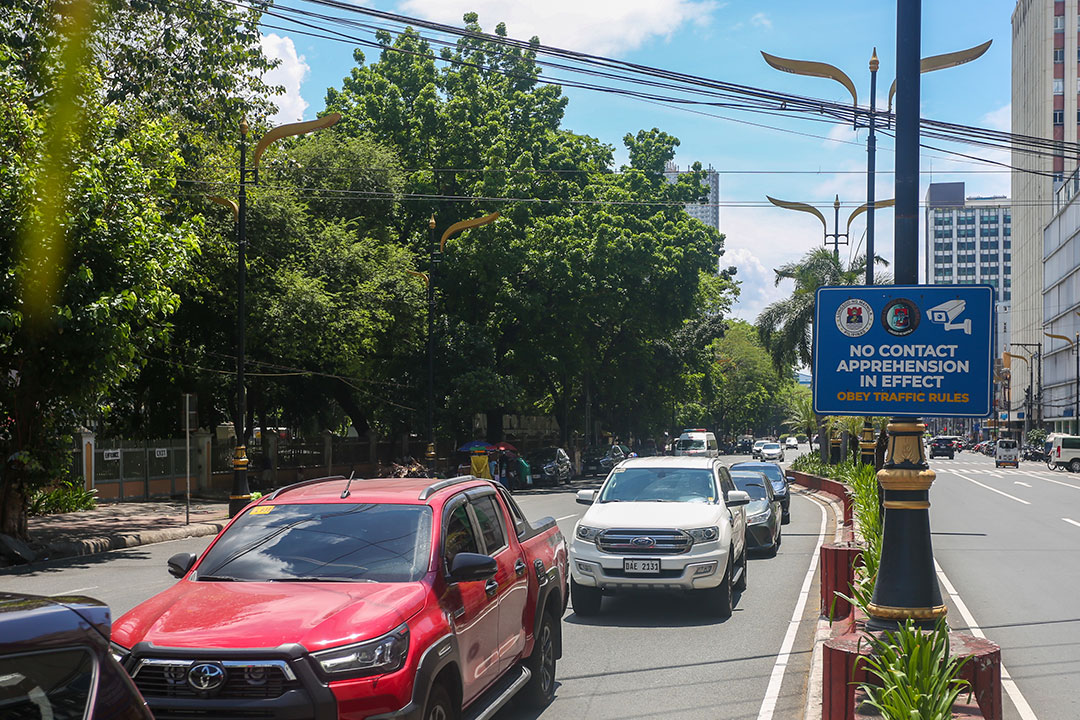
Static
By Marvin Tort

With the Supreme Court partially lifting its restraining order on the no-contact apprehension program (NCAP), the Metro Manila Development Authority (MMDA) now faces the challenge of convincing critics that the system can indeed work and significantly improve traffic flow and road safety.
On Tuesday, the Supreme Court granted the government’s request to allow NCAP operations on Metro Manila roads under MMDA jurisdiction. These include major thoroughfares such as EDSA, C5, Katipunan Ave., Marcos Highway, Roxas Blvd., Commonwealth Ave., Quezon Ave., West Ave., E. Rodriguez Ave., and Buendia (Gil Puyat) Ave.
However, NCAP implementation by local government units such as the cities of Manila and Parañaque remain suspended until the Supreme Court issues a final resolution on petitions challenging the constitutionality of no-contact apprehension for traffic violations.
NCAP was initially suspended in August 2022 after several petitions were filed against it at the High Tribunal. In 2023, the Court conducted oral arguments from both sides. To date, the Court has yet to render a final decision but has modified its original restraining order to allow the MMDA to resume NCAP on specific roads.
Petitioners against NCAP include Kilusan sa Pagbabago ng Industriya ng Transportasyon, Inc. (KAPIT), Pangkalahatang Sangguniang Manila and Suburbs Drivers Association Nationwide (Pasang-Masda), Alliance of Transport Operators and Drivers Association of the Philippines (ALTODAP), and the Alliance of Concerned Transport Organization (ACTO). These groups claim that NCAP lacks legal basis.
In convincing the Court to partially lift the restraining order, government lawyers argued that “the right to use vehicles on public roads is a privilege, and that privilege carries with it not only the duty to ensure the safety of pedestrians and travelers but also a collective obligation to ensure that roads continue to serve our national economy and benefit everyone.”
They further argued, “Our concerned national regulatory agencies and local governments have joined hands to ensure this privilege is not abused. Through NCAP, they have established a mechanism to manage traffic and hold accountable those who abuse their privilege to use our roads.”
This point, to me, is the heart of the matter. NCAP is not intended to deprive anyone of their privilege to use public roads. Rather, it provides an alternative method for strictly enforcing traffic regulations designed to ensure safety and order.
This was precisely why, in a column two months ago, I urged the Supreme Court to finally resolve this three-year-old case in favor of upholding NCAP rather than striking it down. I remain convinced that technology-based traffic enforcement represents the future, despite its imperfections.
I also referenced arguments presented in Court by the MMDA and the Land Transportation Office (LTO), which highlighted that the average monthly number of traffic violations recorded by surveillance cameras tripled since NCAP’s suspension in August 2022.
I firmly believe that technology, compared to human enforcers, is dispassionate, impartial, and free from personal discretion when determining violations. While technology cannot be held personally accountable in the same way individuals can, it is also incorruptible. Thus, my continued support for NCAP.
Global experience demonstrates that camera-based traffic enforcement can significantly enhance compliance with traffic rules, reduce accidents, and increase transparency in administrative processes. Consequently, it can be expected to lower traffic-related fatalities and violations.
When implemented effectively, automated camera-based enforcement ensures impartiality and consistency. In a country like the Philippines, cameras can enforce traffic rules uniformly, disregarding motorists’ socioeconomic or political backgrounds. At the point of apprehension, political influence can be minimized.
Moreover, cameras operate continuously, accurately documenting violations and providing reliable evidence for adjudication. They run 24 hours a day, 365 days a year. Unlike human enforcers, they do not tire and can cover broader areas. Algorithms can efficiently handle enforcement tasks.
However, to prevent future disruptions and address legal shortcomings, Congress should consider passing national legislation institutionalizing NCAP for national use. Concurrently, lawmakers can improve the legal framework by establishing specialized traffic adjudication boards and dedicated traffic courts.
Congress can further define the range of penalties by updating the existing Land Transportation Code to accommodate enforcement via NCAP. Amendments to traffic and transportation laws should reflect emerging technologies and set clear national standards for road use and enforcement.
Additionally, lawmakers should rationalize and harmonize existing laws, policies, and regulations governing all road users — motor vehicles, pedestrians, motorcycles, bicycles, scooters, electric vehicles, personal mobility devices, and all others.
One aspect requiring in-depth analysis is establishing scientifically based, data-driven standards for uniform and consistent traffic penalties that apply to all road users, across all local government units. Traffic fines must not remain static but should be periodically adjusted for inflation and evolving driver behavior.
Ultimately, NCAP aims to enhance traffic flow, public safety, and overall quality of life. As the government argued before the Court, roads must “serve our national economy and benefit everyone,” and NCAP, in my opinion, can be an effective mechanism “to manage traffic and hold accountable those who abuse their privilege to use our roads.”
Marvin Tort is a former managing editor of BusinessWorld, and a former chairman of the Philippine Press Council